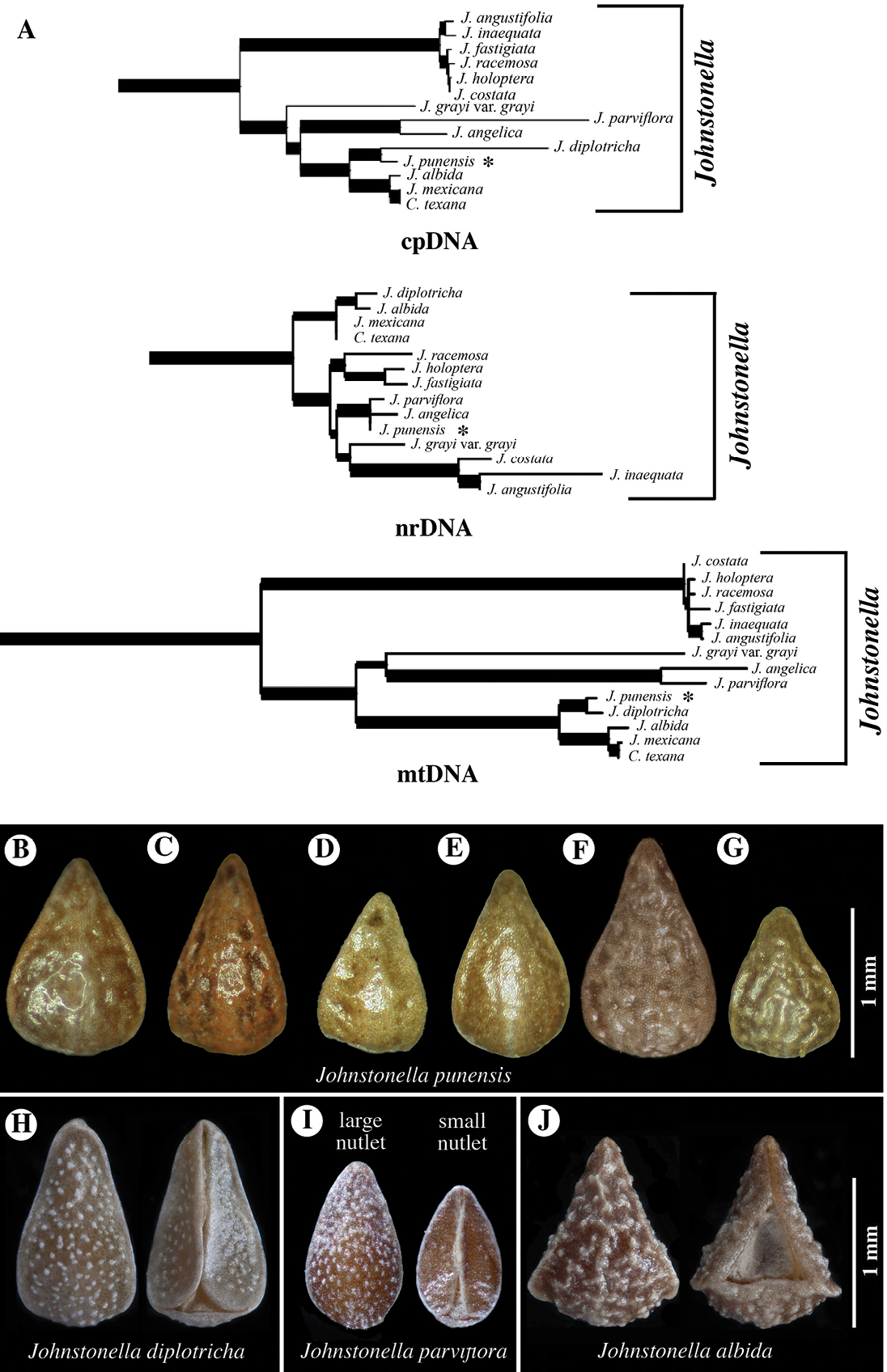
|
||
|
A Cladograms of Johnstonella clade from Simpson et al. 2017a, showing relationships of Teillier 4754 (CONC150914) specimen of J. punensis (indicated with *) from analyses using sequence data of chloroplast DNA (cpDNA), nuclear ribosomal DNA (nr DNA) and mitochondrial DNA (mtDNA); note that J. punensis and J. diplotricha are sister taxa in the cpDNA and mtDNA analyses, but that J. punensis forms a polytomy with J. parviflora and J. angelica in the nrDNA analysis B–J comparison of nutlet morphology of Johnstonella species occurring in South America, all shown at the same scale of magnification B–G Johnstonella punensis, nutlets dimpled to rugulose, specimen source cited B C. Muñoz 3710 (SGO119165) C Pisano & Venturelli 1961 (SGO138942) D Zalensky XVII-972 (SGO078510) E Teillier 4754 (CONC150914) F Teillier 3686 (SGO139488) G Pisano & Venturelli 1738 (SGO139111); H Johnstonella diplotricha, nutlets white-tuberculate, generally homomorphic, Haene 1779 (SI47823) I Johnstonella parviflora, nutlets white-tuberculate, heteromorphic with one larger (left in dorsal view) and three smaller (one of three at right, ventral view), M. Muñoz 2715 (MO4317600) J Johnstonella albida, nutlets coarsely tuberculate, attachment scar deep, appearing excavated, Kiesling 3589 (SI87780). |